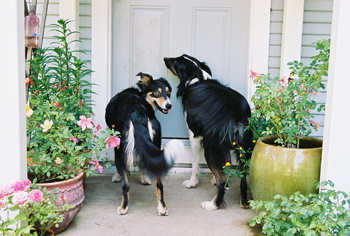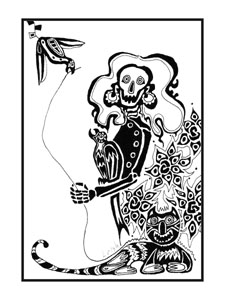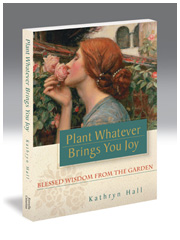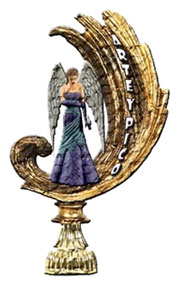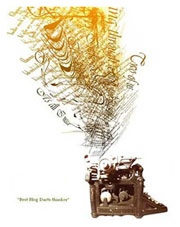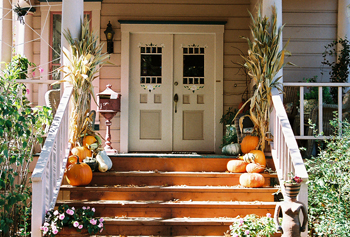
As a little girl I can remember the awe I felt when I realized that on the night of Hallowe’en every door of every neighbor in my neighborhood became available to be opened. I could look inside. I could see who lived there, what their house looked like, at least from the vantage point of standing in the porchlight peering in. Some of the mystery was stripped away. So it was not so much about the candy, about the costumes. It was about solving the mystery of who else lived among us. And I have loved it ever since.
Nor was I hungry; so I found
That hunger was a way
Of persons outside windows,
The entering takes away.Emily Dickinson
I was so enraptured with the entire ritual of trick or treating that I continued
to go out with friends well into my mid-teens, against my mother’s protests.
It was probably my first taste of real freedom–going out into the dark of a cold
New England night with my peers, rushing up and down streets, across near frozen fields, drawn to beckoning porchlights all welcoming us with appreciative oohs and awwws. Makeup and candy and freedom, oh boy.
My enthusiasm has never dampened. So out of this great love for Hallowe’en, in early anticipation, last year in a moment of wild abandon I planted not one but two entire envelopes of pumpkin seeds. Two kinds. Big and bigger. Within weeks they had taken over a huge portion of my vegetable garden. (I just love unruly children. It gives me something to stew over, monitor and fuss about.) And they were beautiful. Just look.
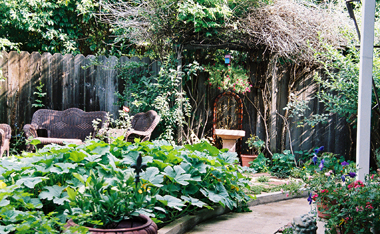
And, later…
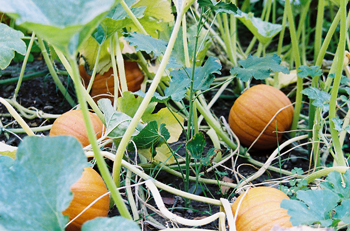
What more can be said? I adore them. I celebrated their full arrival with a party for all the children in my life. They came and picked out their Very Own and proceeded to draw faces on them. They were very happy about the whole affair and so were all their parents, as was I. It’s a glorious tradition. You must try it sometime.
Now today, in celebration of Hallowe’en and the attending pumpkins, in lieu of opening my doors to you personally, welcoming you with something homebaked, I am opening my private family recipe book and honoring your visit today by offering you one of my most prized recipes for–Pumpkin Bread! It is wonderfully delicious and I rarely make it available. But today, for you, in gratitude, here it is:
Kathryn’s Fabulous Pumpkin Bread!
Warning: when you first read this, it sounds like a lot of steps and can seem
overwhelming. What it really is is a lot of BOWLS. If you follow each step
it’s really quite easy and you will reap the rewards of something very yummy
that your whole family will love you for.Now. Preheat your oven to 350 degrees F. And grease a 9″ x 5″ loaf pan with
olive oil.Whisk following in a medium bowl:
1 cup wholewheat flour
1/2 cup white flour
1 1/2 teaspoons ground cinnamon
1 teaspoon baking soda
1/4 teaspoon salt
1 1/2 teaspoons ground ginger
1/2 teaspoon ground nutmeg (freshly grated is better)
1/2 teaspoon ground cloves
1/4 teaspoon baking powderCombine in a cup:
1/3 cup milk
1/2 teaspoon vanilla (use only real vanilla)Then, in a large bowl, beat for about 30 seconds:
6 tablespoons unsalted butter (use only real butter)
Gradually add and beat on high speed until light in color and texture (about
3 to 4 minutes total):1 cup sugar
1/3 cup brown sugar (or 1/3 cup molasses–take your pick)Beat in, one at a time:
2 fresh eggs from free-range chickens (don’t cheat)
Then, add and beat on low speed until blended:
1 cup pumpkin puree (if you can do fresh, even better–you just steam an
organic pie pumpkin; it’s easy)Add the flour mixture to the big bowl in three parts, alternating with the milk mixture in two parts, mixing it all up with a wooden spoon. Don’t overmix.
Fold in:
1/2 cup raisins (make sure they are a bit plump)
1/2 cup chopped nuts (I like pecans)Now pour the batter into the pan and spread evenly. Bake until a fork comes out clean when inserted into center, about one hour, sometimes longer. I slide a knife around edge when it emerges from oven, then allow it to cool before taking from pan. Then I usually wrap it in a colorful cotton cloth into which I’ve laid white cotton napkins, which will wash out easily later, and put the entire lovely concoction in a nice basket. What could be more festive? And it smells just delicious! Your whole house and household will thank you.
Enjoy.
Love and blessings,
Kathryn
Posted on October 29th, 2007 by Kathryn
Filed under: People at Play | 3 Comments »

